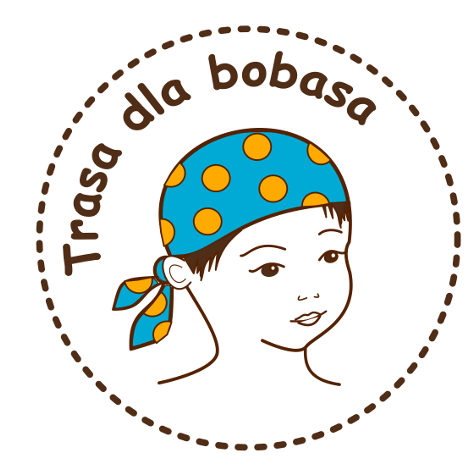Top 10 Must-See Exhibits at the British Museum

Located in the heart of London, the British Museum is one of the oldest and most important museums in the world. Its collections include works and artifacts from almost all world civilizations, documenting human history from its beginnings to the present.
- Entry to the museum is free, but to avoid long lines, it's a good idea to book tickets in advance on the website www.britishmuseum.org/visit
- We spent an entire day visiting the museum, and it still wasn't enough - we didn't have time for many rooms
Below, we present some of the most valuable and famous exhibits that are worth including in your visit plan.

The Great Court of Queen Elizabeth
Walking through the museum, you can't miss the glass-covered courtyard in the central part of the building. It is a steel and glass structure consisting of 3,312 unique glass panels. The courtyard is the largest covered courtyard in Europe and one of the most iconic interiors in London.
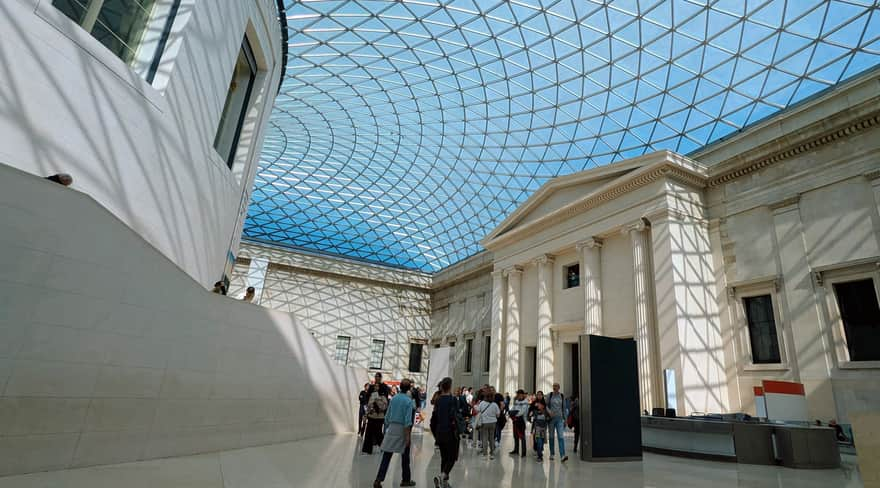
1. The Rosetta Stone
One of the most valuable and famous exhibits in the British Museum is undoubtedly the Rosetta Stone. This stone, weighing over 760 kilograms, is called "the most famous piece of rock" in the world. It contains the text of a decree issued by Egyptian priests over 2,200 years ago, written in three different scripts: Greek, Egyptian Demotic, and Egyptian hieroglyphs. Thanks to it, Egyptian hieroglyphs were deciphered and read for the first time, allowing access to previously inaccessible texts on numerous ancient monuments and papyri.
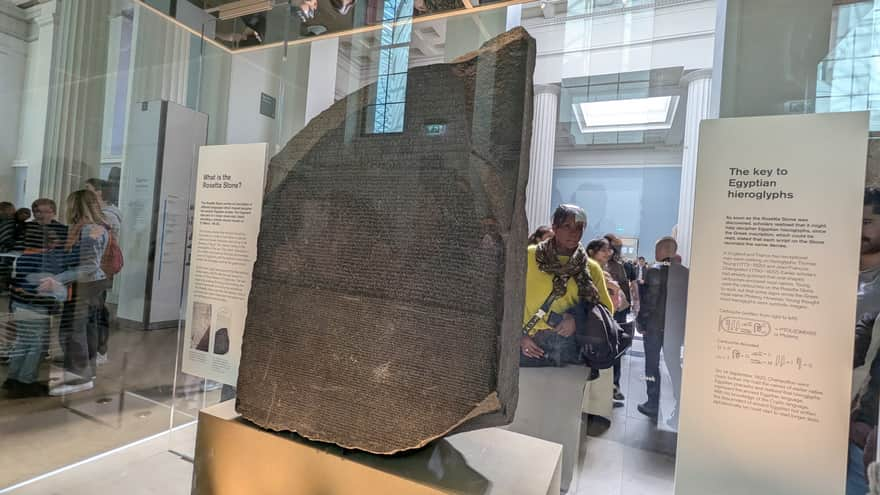
2. Parthenon Sculptures "Elgin Marbles"
They are displayed in the room dedicated to the Parthenon, on the third floor of the museum.
The Elgin Marbles are sculptures and architectural decoration fragments from the ancient Parthenon on the Acropolis in Athens. They are one of the most important collections of ancient sculpture in the world. They were brought to the UK in the early 19th century by Thomas Bruce, Lord Elgin, a British diplomat and art collector, who claimed he had permission from the Ottoman authorities (the then occupiers of Greece). These objects are now in the British Museum in London and are among the most controversial exhibits. Greece has been demanding their return for years, arguing that they were taken illegally and should be returned to Athens.
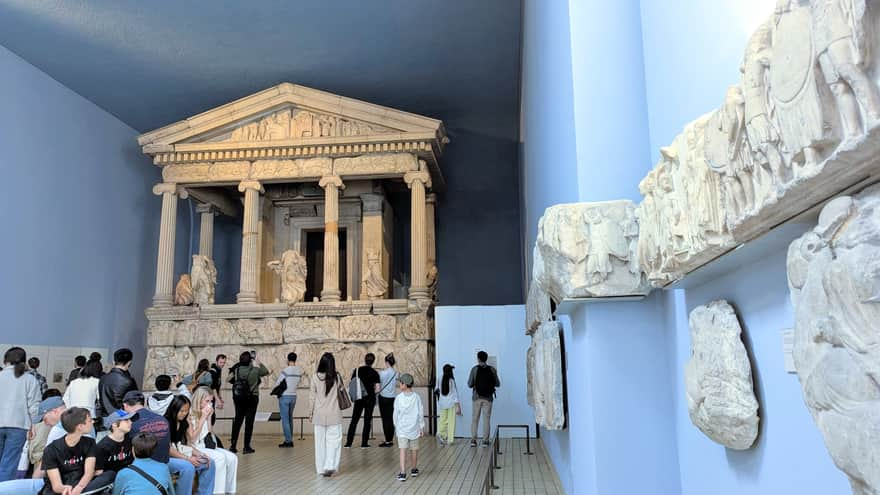
3. Easter Island Statue
The moai statue from Easter Island is located in the "Oceania" room.
The Easter Island statue in the British Museum is one of the stone moai - characteristic sculptures created by the indigenous people of Rapa Nui (also known as Easter Island) in the Pacific. Made from hard volcanic rock, it depicts a stylized human figure with a large head and distinctive facial features typical of moai. For the people of Rapa Nui, the statue holds great cultural and spiritual significance. The island's authorities have been appealing for its return for many years, emphasizing its role as a sacred symbol of their identity.
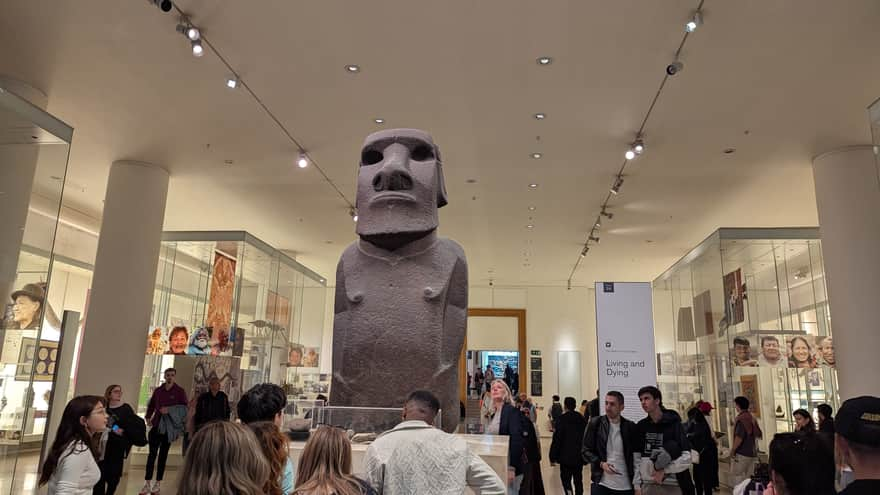
4. Sutton Hoo Treasure
The Sutton Hoo Treasure is displayed in room 41 "Sutton Hoo and Europe, AD 300-1100".
The Sutton Hoo Treasure is one of the most important archaeological finds in British history, presented in the British Museum. It was discovered in 1939 in Suffolk, in an early medieval ship burial from the 7th century.
The most important element of the treasure is a richly decorated helmet. In addition to it, swords, shields, gold and silver ornaments, everyday items, and luxury vessels from Byzantium were found in the grave. The grave probably belonged to King Raedwald of the East Anglian kingdom. The discovery of Sutton Hoo shed new light on the so-called "dark ages" in England, showing a developed culture, international contacts, and a high level of craftsmanship.
The treasure can be seen today in a special gallery in the British Museum, where it is presented as a symbol of England's heritage before the Viking era.
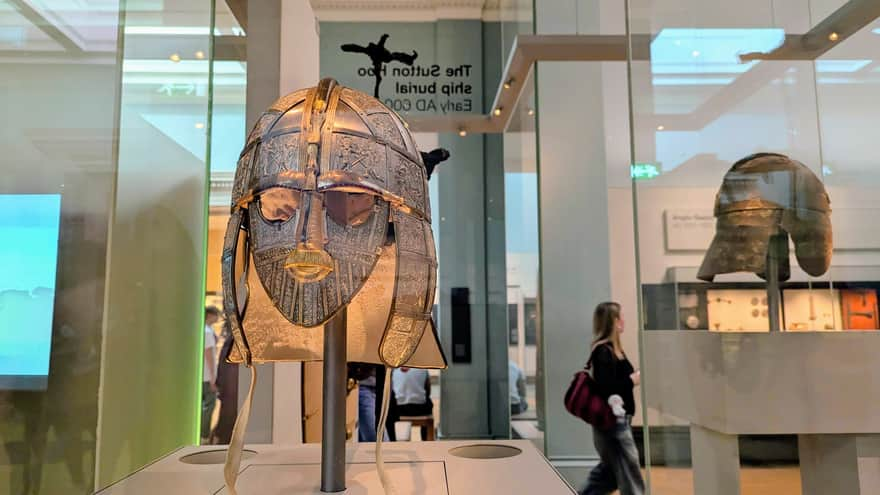
5. Lewis Chessmen
They can be seen in room no. 42.
The Lewis Chessmen are some of the most famous medieval chess pieces in the world. The pieces are carved from walrus tusk and whale bone. They depict kings, queens, bishops, knights, rooks (in the form of warriors), and pawns. Each piece is carefully crafted, with rich details and often with a facial expression that gives it an individual character. The most recognizable are the queens with their hands on their faces, in thought. The chess pieces were found on the Scottish Isle of Lewis and were probably made in Norway, which then ruled over this part of Scotland.
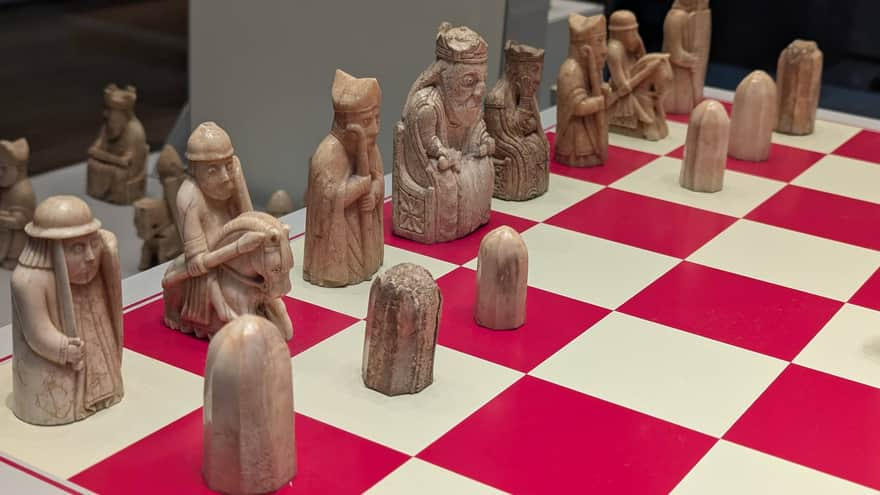
6. Egyptian Mummies - including the Mummy of Katebet
Egyptian mummies in the British Museum are located in rooms 62-63.
Egyptian mummies are one of the most important and popular attractions in the British Museum. They are located in the Egyptian Gallery, where both the mummies themselves and richly decorated sarcophagi are presented. In the museum, you can see mummies of pharaohs, priests, officials, and even ordinary citizens, from various periods of ancient Egyptian history. Some of them are exceptionally well-preserved, allowing you to see details of mummification, including bandages, amulets, and even tattoos.
One of the best-preserved and most famous mummies in the British Museum's collection is the Mummy of Katebet.
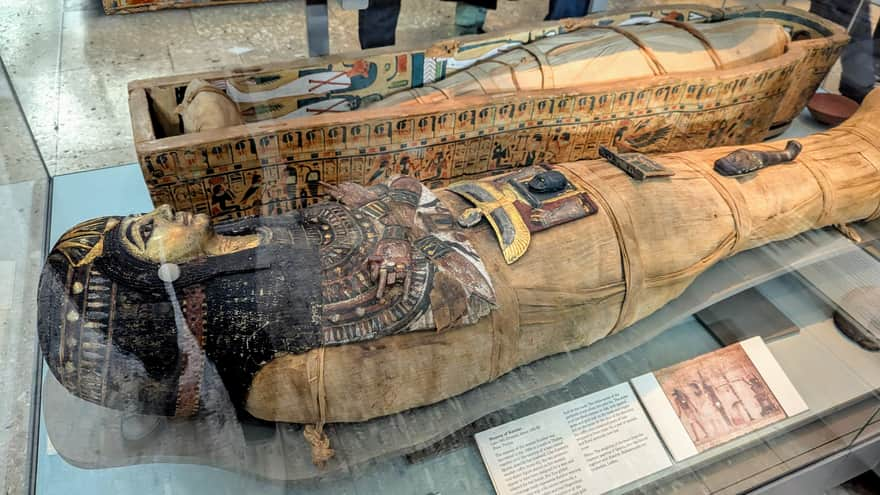
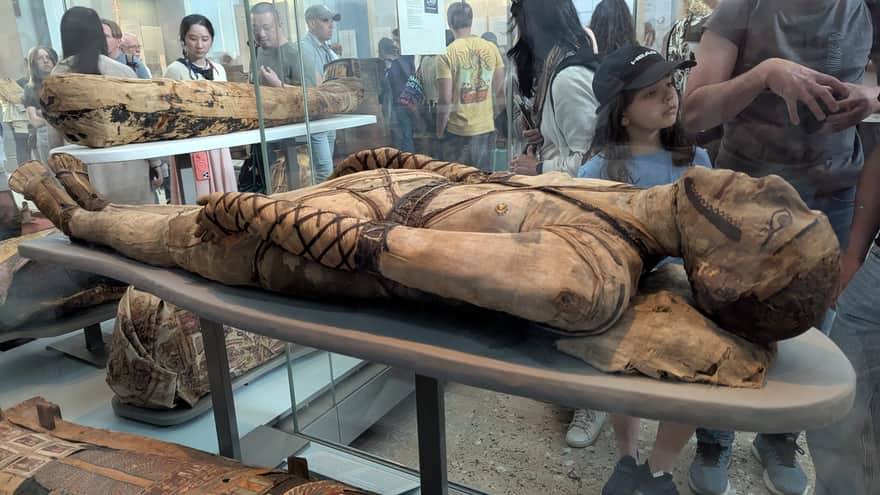
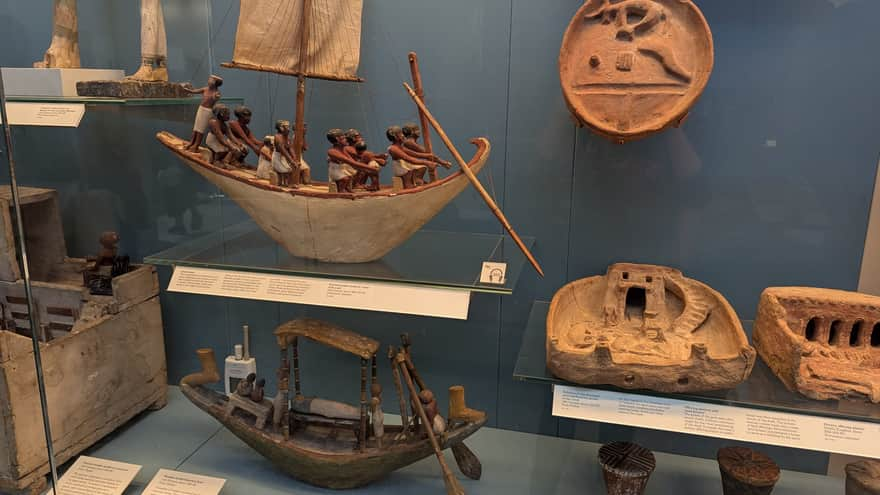
7. Tombs of Ur - Royal Tombs from Mesopotamia
Exhibits from the tombs of Ur are located in room no. 17.
Ur, as one of the main cities of the Sumerians, was a powerful center of Mesopotamian civilization around 2500 BC. The tombs show the immense wealth of the elite and provide insight into burial practices, including human and animal sacrifices made alongside rulers.
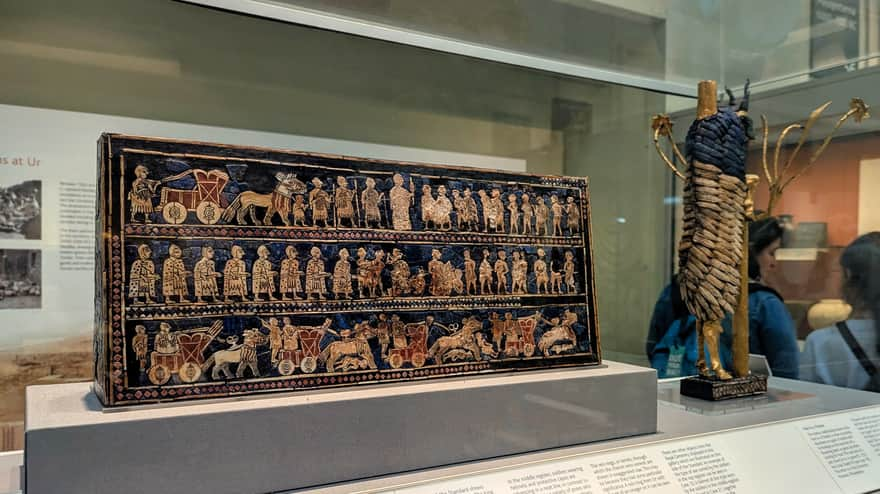
8. Benin Bronzes and Benin Mask - Masterpieces of African Art
The Benin Bronzes are located in the African galleries, specifically in room number 25
Contrary to the name, they are usually figures cast or carved in brass. The works from Benin are characterized by extraordinary precision (the bronze casts are extremely thin - about 2 mm thick - and realistic); they were made using the lost-wax technique. The Benin Bronzes, along with the bronzes from Ife, are considered some of the greatest achievements of African art.
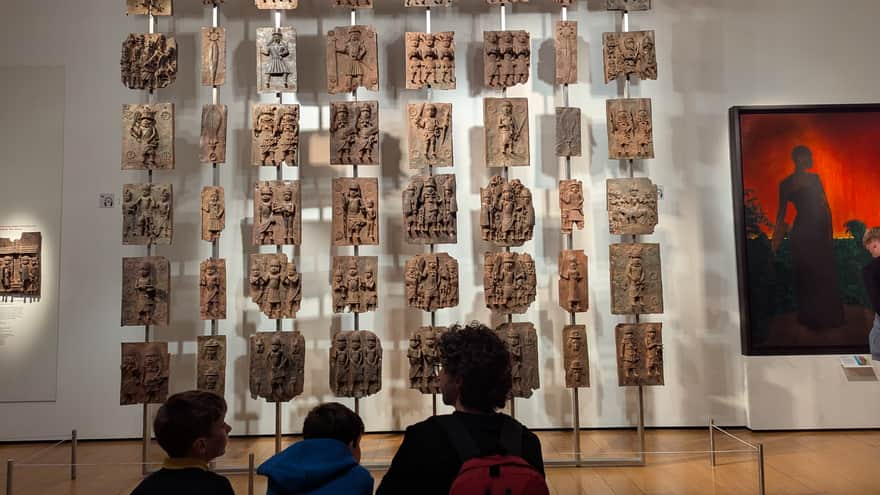
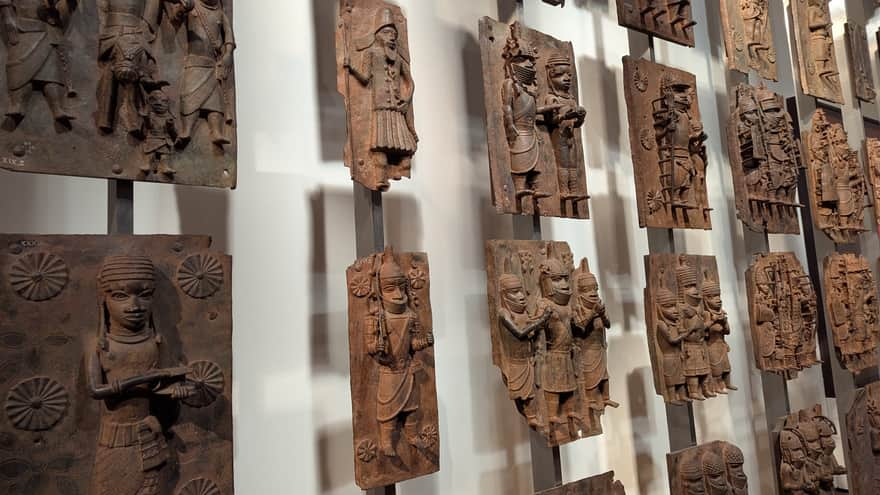
9. Treasures from Mesopotamia - including Monumental Winged Bull Statues (Lamassu)
The British Museum in London has a rich collection of artifacts from Mesopotamia, including Assyrian cuneiform writings, sculptures, and reliefs. Exhibits related to Mesopotamia are among the most valued in the museum.
Particularly impressive are the large statues of lamassu - in Assyrian art, depicting a winged bull with a human, bearded face. Lamassu, usually in pairs, were located at monumental entrances to palaces and within the palaces at entrances, for example, to throne rooms, where they were meant to serve as guardians.
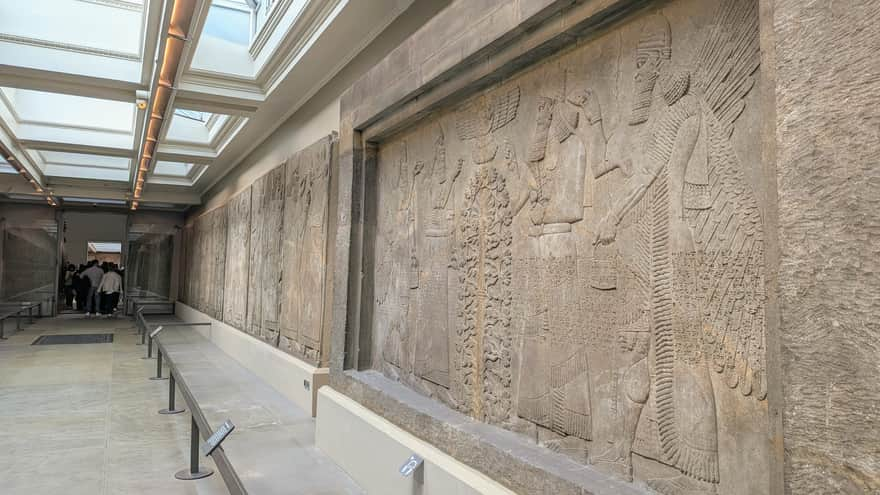
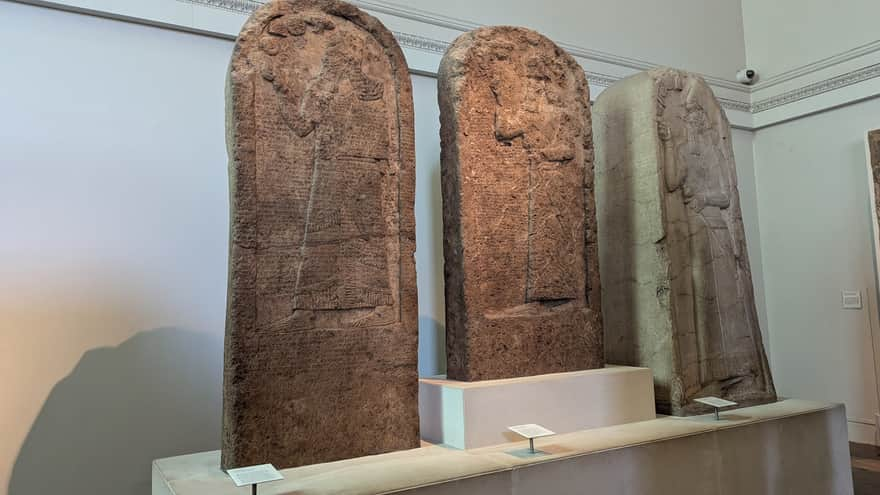
10. Cyrus Cylinder
The Cyrus Cylinder can be found in room 52
The Cyrus Cylinder is a clay cylinder covered with cuneiform script, dating from the 6th century BC, attributed to Cyrus II the Great, king of Persia. It was discovered in the ruins of Babylon and is considered the first document concerning freedom and human rights. The text on the cylinder describes Cyrus's policy towards conquered peoples. The king announces, among other things, freedom of religion, the rebuilding of temples, and the right for exiles to return to their homeland.
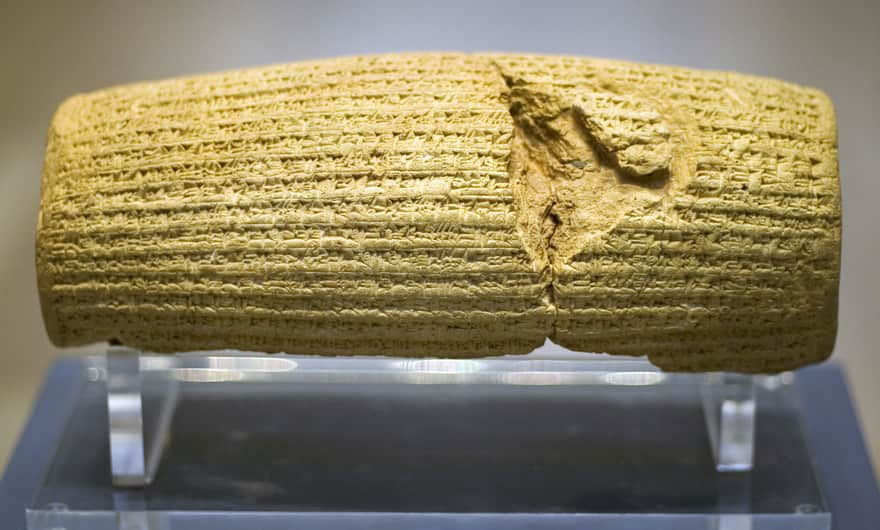
Publish Date:
